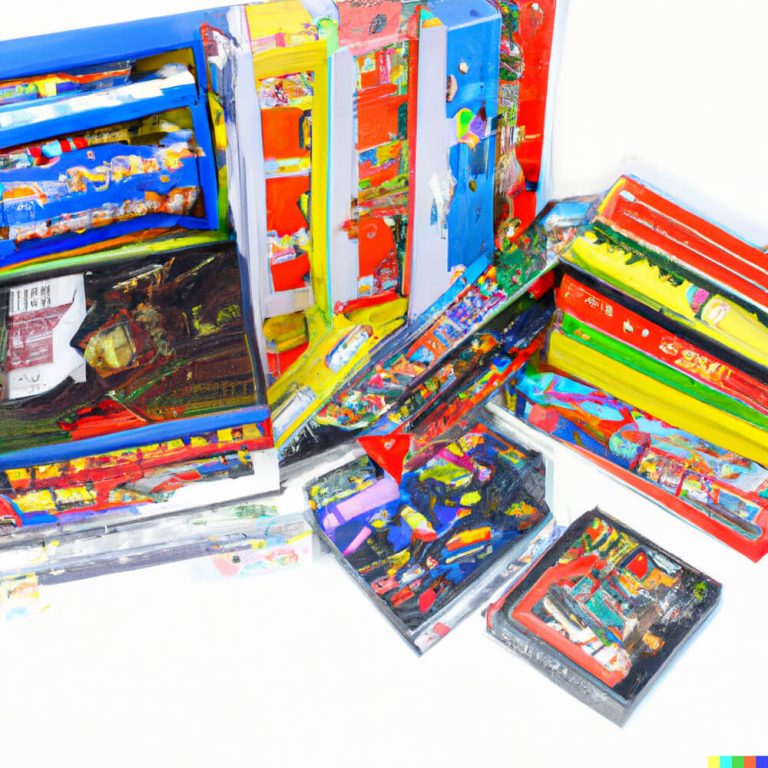Trouble Classic Board Game has been a beloved and enduring classic for generations, providing hours of fun and excitement for players of all ages. This article aims to explore the history, gameplay, unique features, tips for winning, variations, and the future relevance of this timeless board game.
First introduced in the 1960s by the Kohner Brothers, Trouble has stood the test of time as a staple in the world of board games. Its simple yet engaging gameplay makes it a favorite choice for family game nights, gatherings with friends, or even just a casual evening at home.
In this guide, we will delve into the origins of Trouble Classic Board Game, understand its rules and mechanics, explore what sets it apart from other board games, and examine why it continues to be enjoyed by countless players worldwide. Whether you’re new to Trouble or a seasoned player looking to hone your skills further, this comprehensive overview will provide valuable insights into this iconic game.
The History of Trouble Classic Board Game
The Trouble classic board game has a fascinating history that dates back to the early 1960s. It was first manufactured by the Kohner Brothers and later on by Milton Bradley (now known as Hasbro). The game was designed by Bill Payne, which was inspired by the ancient Indian game of Pachisi. Trouble was initially marketed as “Frustration,” but the name was eventually changed to Trouble due to trademark issues in the UK.
In 2017, Trouble was inducted into the Toy Hall of Fame, solidifying its status as a timeless classic. Over the years, it has remained a popular choice for families and friends looking for a fun and engaging board game to enjoy together. Its simple yet addictive gameplay and colorful design have contributed to its enduring appeal, making it a staple in many households around the world.
One of the key factors behind Trouble’s continued success is its ability to appeal to players of all ages. From young children who are just learning how to play board games to adults looking for some lighthearted entertainment, Trouble offers an inclusive and enjoyable gaming experience for everyone.
| Year | Event |
|---|---|
| 1965 | Trouble game released by Kohner Brothers |
| 1970 | Milton Bradley acquires rights to Trouble |
| 2017 | Trouble inducted into Toy Hall of Fame |
How to Play Trouble Classic Board Game
Playing the Trouble Classic Board Game is a fun and exciting experience for players of all ages. The game is simple to learn, but it also requires strategic thinking and a bit of luck. Here’s a step-by-step guide on how to play Trouble Classic Board Game:
- Setup: Place the game board in the center of the table and have each player choose a colored peg. Place all pegs in their respective “START” position on the board.
- Objective: The goal of Trouble Classic Board Game is to be the first player to move all four of your colored pegs from “START” to “HOME”.
- Gameplay: Players take turns pressing the pop-o-matic bubble to roll the die and move their pegs around the board. To move a peg out of “START”, a player must roll a Once a peg is in play, players continue moving their pegs based on the number rolled.
- Trouble Mechanic: If a player lands on a space already occupied by an opponent’s peg, they send that peg back to its respective “START” position. This adds an extra layer of strategy and competition to the game.
Playing Trouble Classic Board Game is not only easy but also offers an element of excitement with every dice roll. Whether you’re playing with friends or family, this classic board game is sure to provide hours of entertainment.
The simplicity and interactive gameplay make Trouble Classic Board Game an ideal choice for family game nights or casual gatherings. With its straightforward rules and mechanics, players can jump right into the action without needing prior experience with complicated board games. Additionally, this game helps promote healthy competition and fosters social interaction among players.
The Unique Features of Trouble Classic Board Game
The Trouble classic board game has several unique features that set it apart from other board games. One of the most distinctive features of Trouble is its iconic Pop-O-Matic dice roller, which adds an element of suspense and excitement to the game.
Instead of rolling traditional dice, players press and release a dome-shaped bubble in the center of the board, causing the dice to be “popped” and resulting in a random number. This innovative feature not only makes Trouble visually appealing but also adds an unpredictable element to the game, keeping players on the edge of their seats.
Another unique feature of Trouble is its emphasis on strategy and interaction among players. The game’s simple rules make it easy for players of all ages to understand and enjoy, but there are strategic decisions to be made throughout the game.
Players must decide whether to focus on moving their own pieces or try to land on opponents’ pieces to send them back to the starting point. Additionally, the ability to form teams adds a collaborative element to Trouble that is not present in many other classic board games.
Furthermore, Trouble stands out for its universal appeal and timeless charm. The game’s bright colors, catchy theme song, and straightforward gameplay make it a hit across generations. Its enduring popularity speaks volumes about its unique features and ability to bring people together for an entertaining and engaging gaming experience.
| Unique Features | Description |
|---|---|
| Pop-O-Matic dice roller | An iconic feature that adds suspense and unpredictability |
| Emphasis on strategy | Simple rules with strategic decisions and opportunities for collaboration between players |
| Universal appeal | The game’s enduring popularity across generations reflects its timeless charm |
Tips and Strategies for Winning Trouble Classic Board Game
When playing Trouble Classic Board Game, having a strategic plan in place can significantly increase your chances of winning. Here are some tips and strategies to help you emerge victorious in this classic game:
1. Protect Your Pieces: One essential strategy in Trouble is to protect your pieces by keeping them in the safety zone as much as possible. By doing so, you reduce the risk of getting sent back to the start by an opponent’s move.
2. Stay Aware of Opponents’ Movements: Pay attention to the moves made by your opponents and anticipate their next moves. This will allow you to plan your own moves strategically and avoid being blocked or captured.
3. Use Blockades Strategically: Consider using blockades when it benefits your game strategy. Placing a blockade on a space where an opponent’s piece is about to land can disrupt their plans and give you an advantage.
By implementing these tips and strategies, you can improve your performance in Trouble Classic Board Game and increase your chances of coming out on top in this exciting and unpredictable game.
Remember that while strategic thinking is important, luck also plays a significant role in Trouble Classic Board Game, making it an enjoyable game for players of all ages and skill levels. So, have fun applying these strategies while embracing the unpredictable nature of this classic board game.
The Popularity and Endurance of Trouble Classic Board Game
Trouble Classic Board Game has remained a popular choice for families and friends for decades. The game’s simple yet engaging gameplay, along with its lasting legacy, has ensured its continued popularity in the world of board gaming.
Enduring Appeal
Despite the constant evolution of board games and the rise of digital gaming, Trouble Classic Board Game has managed to maintain its appeal. Its easy-to-understand rules and fast-paced gameplay make it a hit among both casual and serious gamers. The game’s enduring popularity can be attributed to its ability to bring people together and provide hours of fun and entertainment.
Cultural Impact
Trouble Classic Board Game has become more than just a game; it is ingrained in popular culture. From references in movies and television shows to its presence in family gatherings and social events, Trouble Classic Board Game has cemented itself as a household name. Its iconic Pop-O-Matic dice roller has become synonymous with the game itself, making it instantly recognizable to fans of all ages.
Growth in the Digital Age
In today’s digital age, Trouble Classic Board Game has successfully transitioned into the online realm. With the availability of digital versions and mobile apps, players can enjoy the game anytime, anywhere. This adaptability to modern technology has played a significant role in keeping Trouble Classic Board Game relevant and accessible to new generations of players, ensuring its continued popularity for years to come.
Trouble Classic Board Game Variations and Editions
Classic Edition
The classic edition of Trouble features the iconic Pop-O-Matic dice roller that adds an extra element of anticipation and excitement to the game. The game board is typically a bright, colorful design with spaces for each player’s four pieces to travel along the track.
Special Editions
Over the years, Trouble has released special editions with different themes and variations. Some of these include pop culture icons, movie tie-ins, or even holiday-themed editions. These special editions often come with unique game pieces, special rules, and sometimes even new gameplay mechanics to keep things fresh and exciting for players.
Digital Versions
In today’s digital age, Trouble has also made its way into the virtual realm with digital versions of the game available for various gaming platforms. These digital editions often feature additional modes, online multiplayer capabilities, and updated graphics while still capturing the essence of the classic board game.
With each new edition or variation, Trouble continues to adapt and evolve while still retaining the timeless charm that has made it a beloved classic for generations.
The Future of Trouble Classic Board Game
In conclusion, Trouble Classic Board Game has undoubtedly left its mark on the world of board games. With its simple yet addictive gameplay, it has stood the test of time and continues to be a favorite among players of all ages. The game’s enduring popularity is a testament to its universal appeal and timeless fun.
Despite the ever-changing landscape of gaming, Trouble Classic Board Game has managed to carve out a niche for itself, proving that it is still relevant in today’s gaming world. Its ability to bring people together and provide hours of entertainment makes it a timeless classic that will continue to be enjoyed for years to come.
As new variations and editions are released, it is clear that Trouble Classic Board Game is here to stay. Whether playing the original version or trying out a new twist, there is no doubt that this beloved game will continue to bring joy and excitement to countless players around the world. So if you’re looking for a simple yet entertaining game that never goes out of style, look no further than Trouble Classic Board Game.
Frequently Asked Questions
What Is the Old Game Like Trouble?
The old game Trouble is a classic board game that involves moving your pieces around the board by popping the dice in the iconic Pop-O-Matic bubble. The objective is to be the first player to move all four of your colored pegs around the board and into your finish line.
How Long Does It Take to Play Trouble?
The length of time it takes to play Trouble can vary depending on the number of players and their strategies, but on average, a game of Trouble can last between 15-30 minutes. It’s a relatively quick game, which makes it suitable for casual play and family gatherings.
How Old Is the Board Game Trouble?
The board game Trouble was first introduced in 1965 by Kohner Brothers and later by Milton Bradley. This makes the game over 50 years old, yet it remains popular among families and children today. Its simple yet engaging gameplay has made it a timeless classic in the world of board games.

I love playing all kinds of games – from classics like Monopoly to modern favourites like Ticket to Ride.
I created this blog as a way to share my love of board games with others, and provide information on the latest releases and news in the industry.





